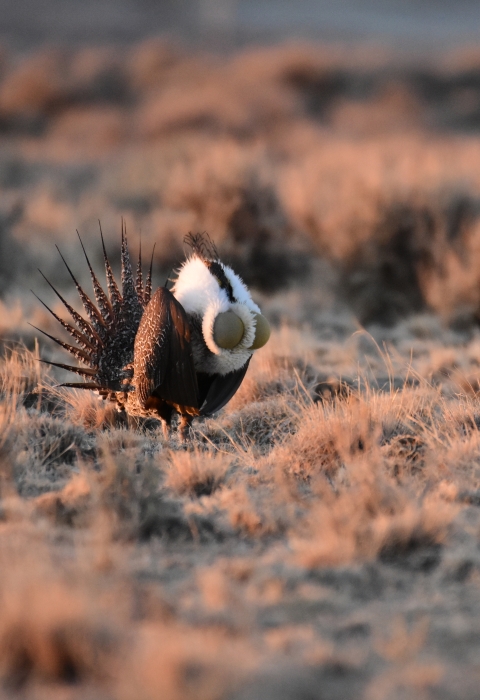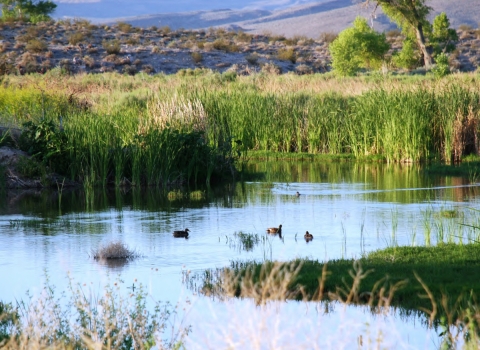As part of its ongoing efforts to improve the effectiveness and implementation of the Endangered Species Act (ESA) and provide the best possible conservation for our nation’s imperiled wildlife, the U.S. Fish and Wildlife Service released today its National Listing Workplan for addressing ESA listing and critical habitat decisions over the next seven years.
This announcement comes as Service biologists wrap up work on a previous list of more than 250 species that had been identified as candidates for protection under the ESA. This new workplan will allow the Service to meet its current and future ESA obligations while creating opportunity for partnerships aimed at delivering conservation on the ground to keep working lands working, protect local ways of life and reduce regulatory burdens, saving the ESA’s protection for the species that need it most.
The workplan identifies the Service’s schedule for addressing all 30 species currently on the ESA Candidate List and conducting 320 status reviews (also referred to as 12-month findings) for species that have been petitioned for federal protections under the ESA. The petitioned species are prioritized using a new methodology for determining how the agency addresses 12-month findings under the ESA. Each status review is assigned to one of five priority categories, according to the urgency of threats, availability of relevant science and information, and ongoing conservation efforts by states and other stakeholders. The workplan also includes eleven additional species for which the Service plans to undertake discretionary status reviews, and one action impacted by court decisions.
“Our workplan is an achievable, grounded, science-based approach for conserving America’s most imperiled species that will provide greater transparency and predictability on our upcoming actions to state wildlife agencies, non-profit organizations, private landowners and other partners,” said Service Director Dan Ashe. “This predictability allows many conservation efforts already underway the opportunity they need to reach their full potential and succeed in recovering species before they require federal protections.”
The Association of Fish and Wildlife Agencies (AFWA) said the workplan would assist the conservation efforts and planning processes for state wildlife agencies across the country.
“This new workplan will bring better certainty to the states as the Service addresses ESA listings and critical habitat decisions in the upcoming years,” said Dave Chanda, AFWA President and Director of New Jersey’s Division of Fish and Wildlife. “Addressing those species of greatest concern in the evaluation and prioritization process will help states best focus on further data collection and the demonstration of effective state management actions.”
The ESA is the last best hope for America’s most imperiled animals and plants, but listing is neither the ultimate goal nor a measure of success. By the time they become listed, some species are facing such an uphill struggle that recovery can take decades. A better path is to improve the fate of species before they ever need listing. The Service hopes that sharing this workplan will spur proactive conservation of imperiled species so federal protections aren’t needed. Recent successes by states, federal agencies, private landowners, non-profit organizations and industry collaborating on behalf of the greater sage-grouse, Columbia spotted frog, New England cottontail, mariposa lily, Page springsnail, Cumberland arrow darter, Goose Creek milkvetch and Yadkin River goldenrod meant these species did not require listing under the ESA.
The inclusion of a species in the workplan does not mean that it will be listed under the ESA. That decision is made only after a rigorous scientific assessment, or status review, of the species. In the event that a petitioned species does require ESA protections, the Service will seek to issue a listing proposal instead of adding the species to the candidate list, and will endeavor to simultaneously propose critical habitat designations. This represents a balanced, streamlined and cost-effective process.
The workplan will be updated as new information is received. Additional species petitions will be addressed based on their urgency and the Service’s capacity according to the prioritization methodology, with a forecast maintained of at least five years into the future. This will provide ongoing transparency and predictability to partners to assist them in their conservation efforts.
For more information about the National Listing Workplan, visit: www.fws.gov/endangered/improving_esa/listing_workplan_actions.html
The Endangered Species Act is an essential tool for conserving the nation’s most at-risk wildlife, as well as the land and water on which they depend for habitat. The recent acceleration of successful recoveries and ESA delistings include three Channel Island fox subspecies, Louisiana black bear, Delmarva Peninsula fox squirrel, Oregon Chub and Virginia northern flying squirrel. These successful recoveries demonstrate that when given the time and resources it needs, the ESA works.



